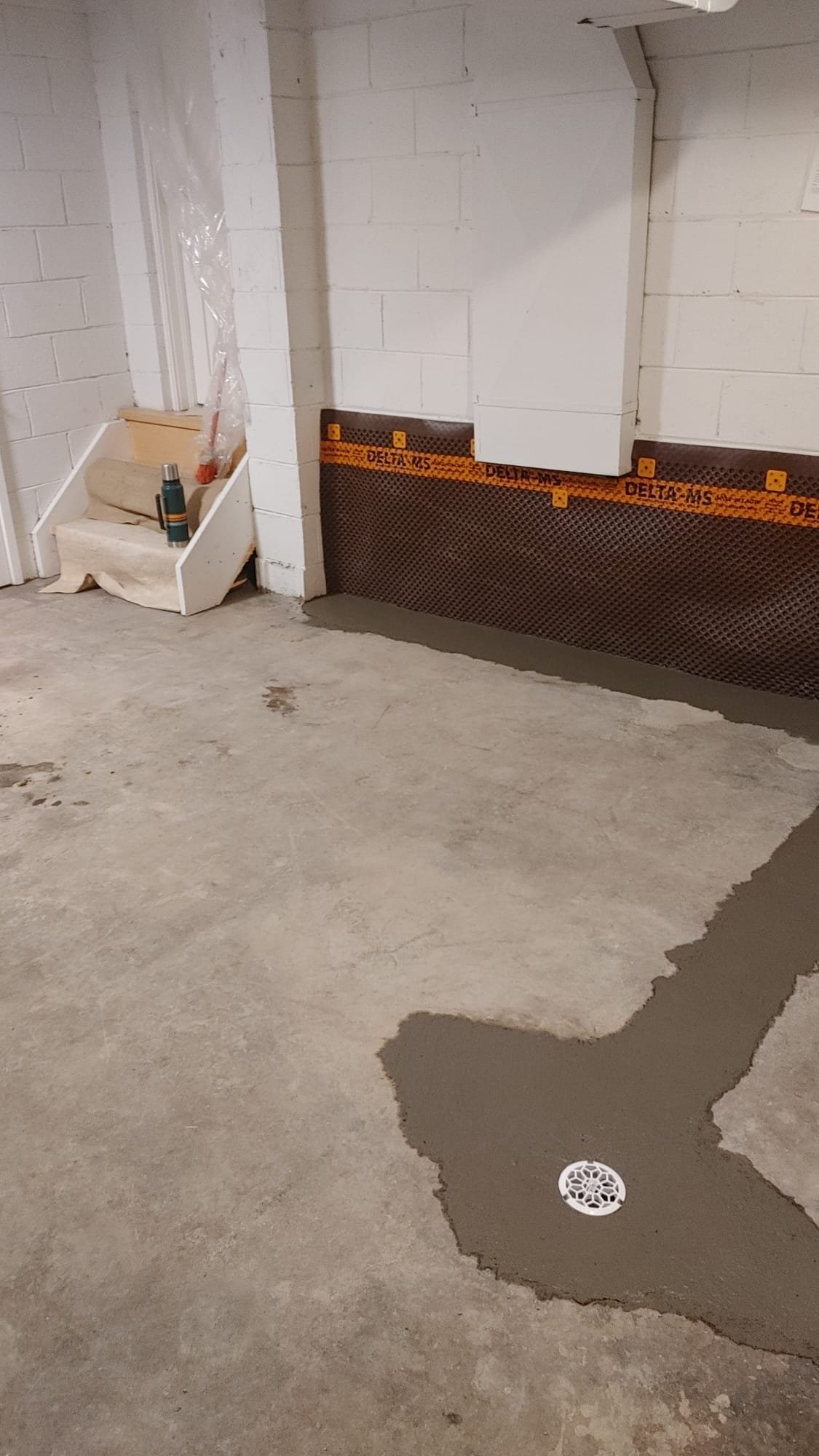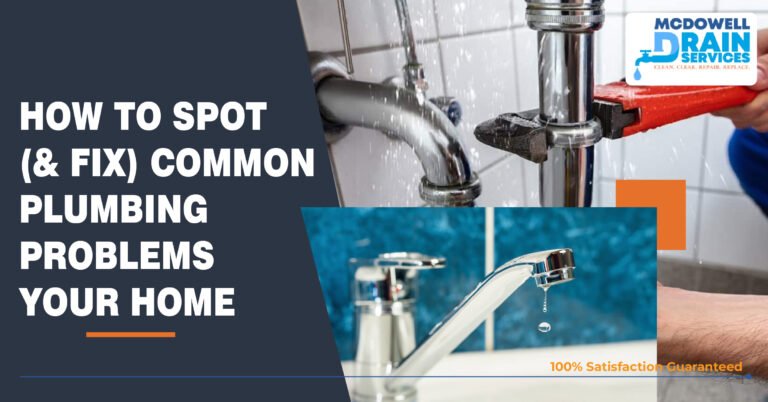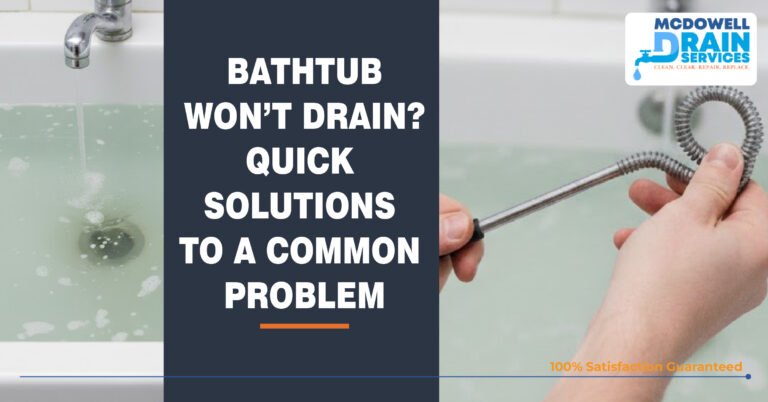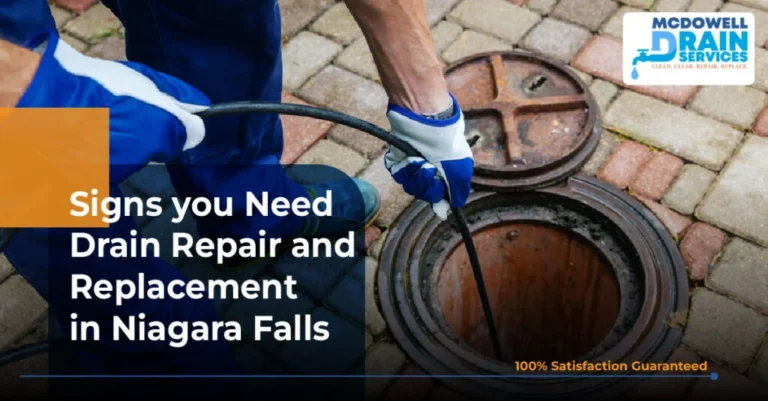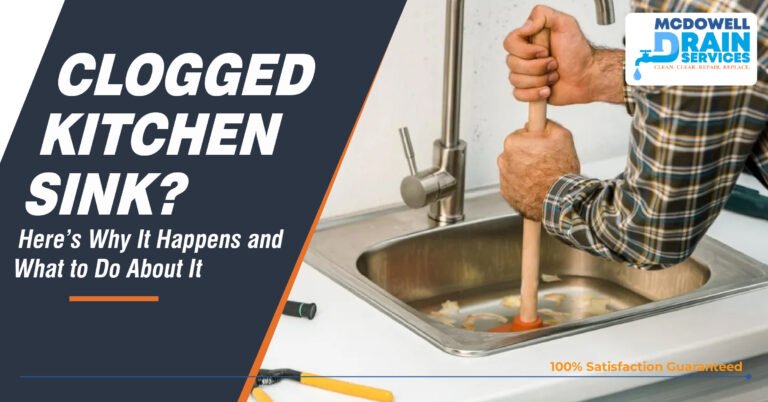Flooded basement in Niagara Falls? You’re not alone. Every spring and after severe storms, dozens of homeowners along Lundy’s Lane, Chippawa, and Stamford Centre discover water pooling in their basements. Our clay-rich soil and high water table create constant hydrostatic pressure, and aging storm sewers can’t always keep up. Acting fast—and smart—can save thousands in repairs and protect your family’s health.
At McDowell Drain & Waterproofing, we’ve been responding to Niagara Falls basement floods for over 45 years. Below is a comprehensive, 1,000-plus-word guide combining DIY steps, professional best practices, and strategic Niagara Falls service links so you can stop the water now and prevent future intrusions.
Prioritize Safety
Your first concern is safety. Floodwater may hide electrical hazards, sharp debris, or sewage contaminants:
Safety Musts
- Shut off power at the breaker box before entering the wet area—never risk electrocution.
- Avoid standing water deeper than 2 inches; it can conceal nails, glass, or live wires.
- If water continues rising or you smell gas, call our emergency drain services immediately.
Identify and Stop the Source
Understanding what caused the flood helps direct the fix:
Heavy Rain & Clogged Storm Drains
Torrential downpours can dump 1–2 inches of rain per hour. Check exterior drains and gutters—if clogged, water will pool around footings. Clearing debris or hiring us for drain repair in Niagara Falls can restore proper flow.
Sump Pump Failure
A malfunctioning pump often leads to back-to-back floods. Test your unit, then consider a sump pump installation in Niagara Falls with battery backup for outages.
Sewer Backflow
Municipal sewer lines can overflow during storms. Installing a backwater valve in Niagara Falls is the only reliable defense.
Foundation Cracks & Poor Grading
Hydrostatic pressure forces water through even hairline cracks. Our foundation crack repair uses polyurethane injections to seal leaks permanently. Exterior grading and exterior waterproofing divert surface water away from your walls.
Rapid Basement Water Removal
Time is of the essence—every hour of standing water increases damage:
Small Puddles
A wet/dry vacuum is fine for shallow water.
Deep Flooding
Call McDowell’s high-capacity pump trucks. We clear basements up to 10× faster than consumer vacuums, minimizing exposure and preventing concrete spalling.
Prompt water removal also limits mold growth, which can begin within 24–48 hours in Niagara’s humid summers.
Thorough Drying, Cleaning & Disinfection
Once water is gone, the next step is drying and sanitizing:
Air Circulation
Place industrial fans and commercial dehumidifiers in opposite corners, and crack open windows if outdoor humidity is lower.
Remove Porous Materials
Discard soaked drywall, carpet, and insulation—they can harbor mold spores even after drying.
Sanitize Hard Surfaces
Scrub concrete floors and block walls with an EPA-approved mold-killing solution. For persistent mold, our mold prevention consultation offers advanced remediation.
Document Every Detail for Insurance
Insurance claims hinge on clear evidence:
Photo & Video
Capture wide shots, close-ups of damaged areas, structural cracks, etc.
Timing & Description
Log when flooding started, suspected causes, and actions taken.
Expense Tracking
Keep invoices for pump-outs, repairs, and replacements—important for “overland water” or “sewer backup” claims.
Professional Assessment & Permanent Repairs
A professional inspection uncovers hidden vulnerabilities:
Foundation Evaluation
We use thermal imaging and crack monitoring to assess structural integrity, followed by foundation crack repair.
Sump Pump Systems
We test and upgrade sump pump and battery backup systems, ensuring proper float levels and alarms.
Backwater Valve Check
Verifying valve operation prevents sewage backflow during municipal surges.
Weeping Tile Replacement
Clogged or absent perimeter drains are replaced with geotextile-wrapped tile tied into your sump pit.
Combining interior fixes with exterior waterproofing creates total protection from both ground and surface water.
Why Niagara Falls Homes Flood
Understanding local geology explains why prevention is vital:
Factors
- Clay-Heavy Soil: Retains moisture and presses against foundations.
- High Water Table: Lake Ontario & nearby rivers keep groundwater high year-round.
- Aging Storm Sewers: Many lines from the 1950s can’t handle modern rainfall.
- Rapid Weather Changes: Spring thaws and summer deluges overwhelm homes.
These conditions, plus urban runoff, mean proactive measures are essential.
Top Flood Prevention Strategies
Professional Sump Pump Installation
Dual-pump systems with battery backup protect during outages.
Backwater Valve Installation
A one-way valve stops sewage reversal.
Interior & Exterior Waterproofing
Sealants, membranes, and grading form a barrier against water.
Regular Drain Maintenance
Annual drain repair and CCTV camera inspections stop blockages before they flood.
Gutter & Downspout Care
Extend downspouts at least two metres from your foundation.
Real Niagara Falls Case Study
“Our finished basement flooded during a sudden summer thunderstorm. McDowell arrived within two hours, pumped out the water, and recommended a new sump pump with battery backup. They also sealed two foundation cracks and installed a backwater valve. We’ve had three major storms since with zero issues—truly a game-changer!”
— Amanda B., Niagara Falls resident
DIY vs. Professional Cleanup
| Task | DIY Approach | McDowell Professional |
|---|---|---|
| Water Removal | Shop-vac | Pump trucks & rapid-flow hoses |
| Mold Remediation | Household bleach | Industrial anti-mold systems |
| Structural Inspection | Visual checks only | Thermal imaging & monitoring |
| Drainage Upgrades | Clearing gutters/downspouts | Full weeping tile & sump installs |
Frequently Asked Questions
Q: Does homeowners insurance cover basement floods?
A: Only if you have “overland water” or “sewer backup” riders.
Q: How much does sump pump installation cost in Niagara Falls?
A: $2,000–$3,500 depending on pump type and backup options.
Q: Can I install a backwater valve myself?
A: No—Ontario code requires licensed professionals and permits.
Q: Is interior waterproofing enough?
A: Best practice combines interior and exterior systems.
Q: Do I need permits for flood-proofing work?
A: Yes, McDowell handles all permits and inspections.
Need Immediate Help?
If your Niagara Falls basement is at risk—or already flooded—don’t wait.
📞 Call McDowell Drain & Waterproofing at (905) 431-5612
Or book a free estimate today.
With 45+ years of local expertise, we’re your trusted partner for emergency response and permanent flood prevention.

